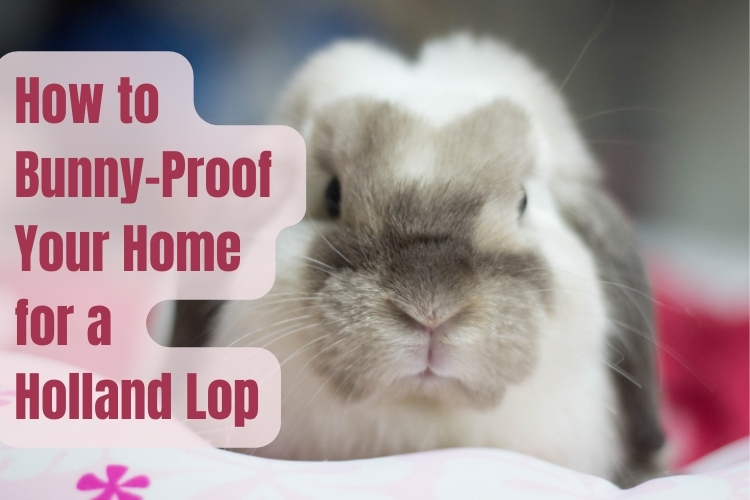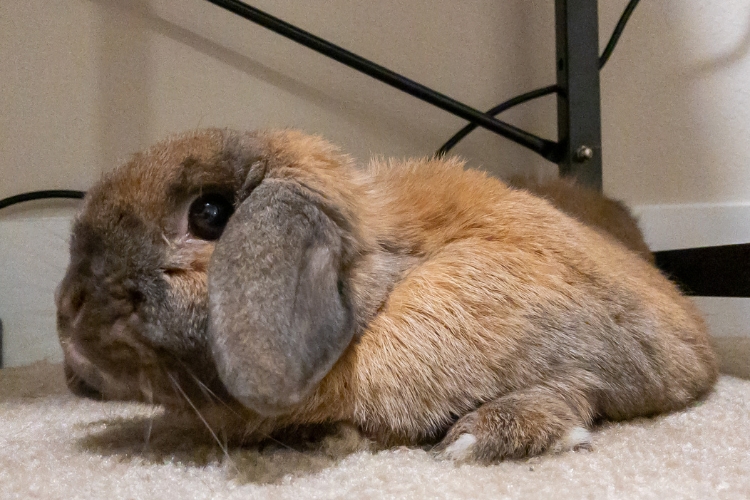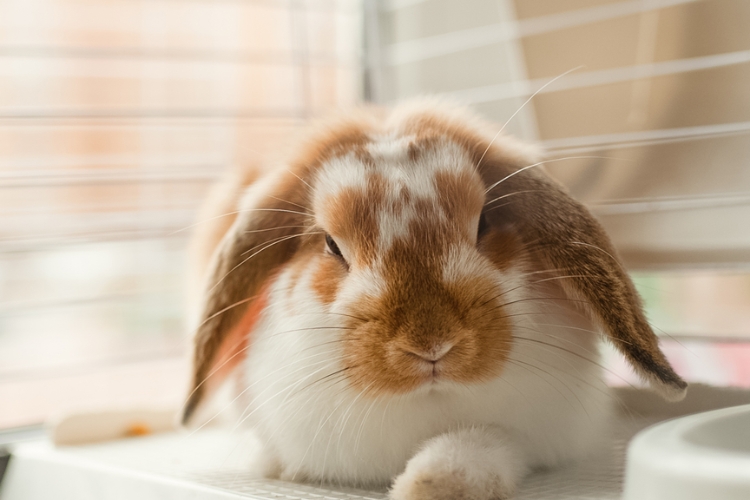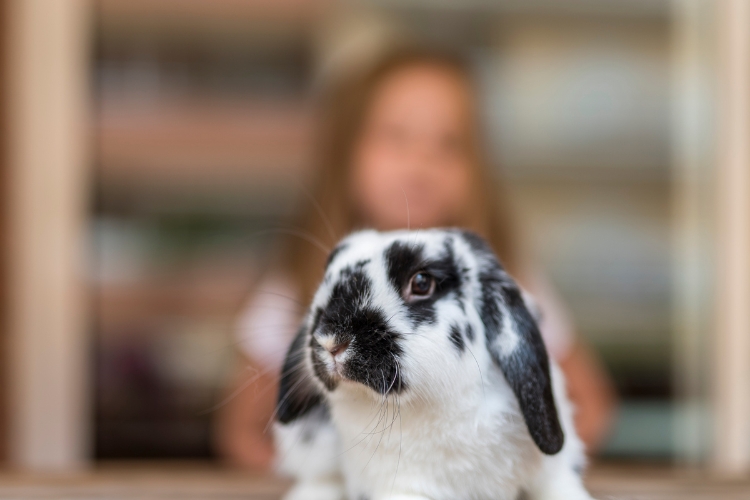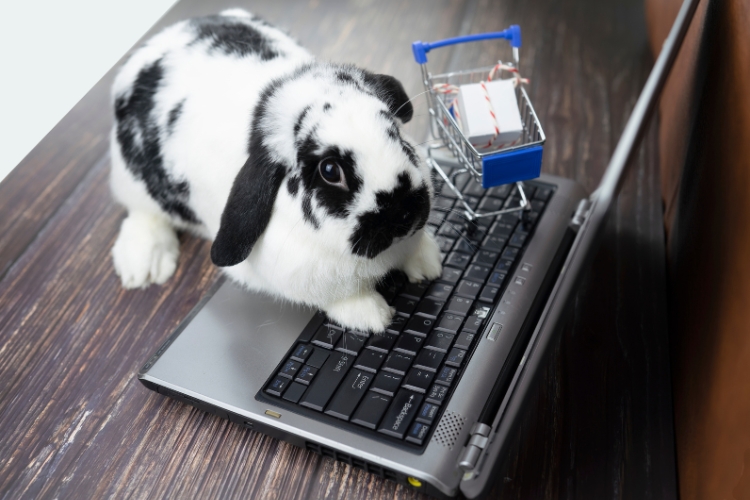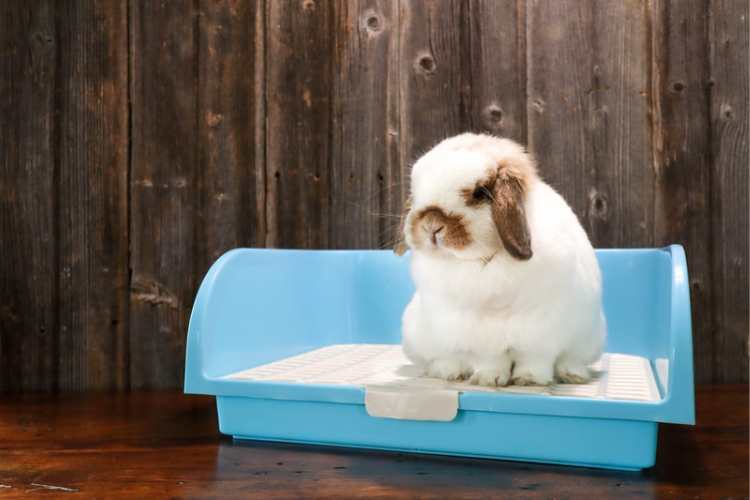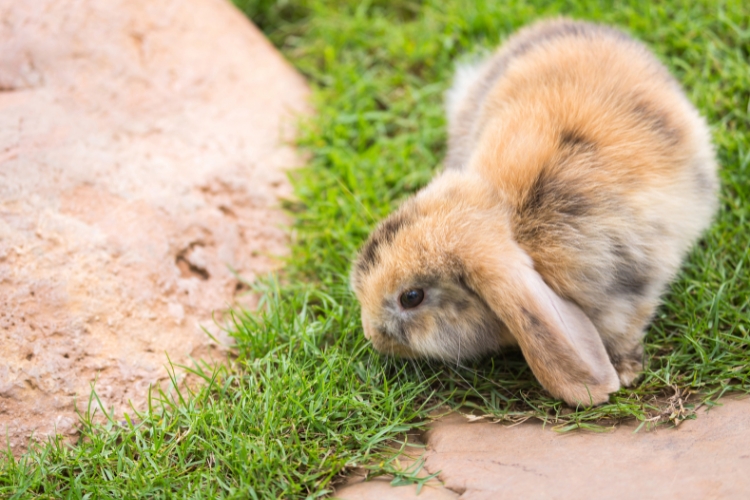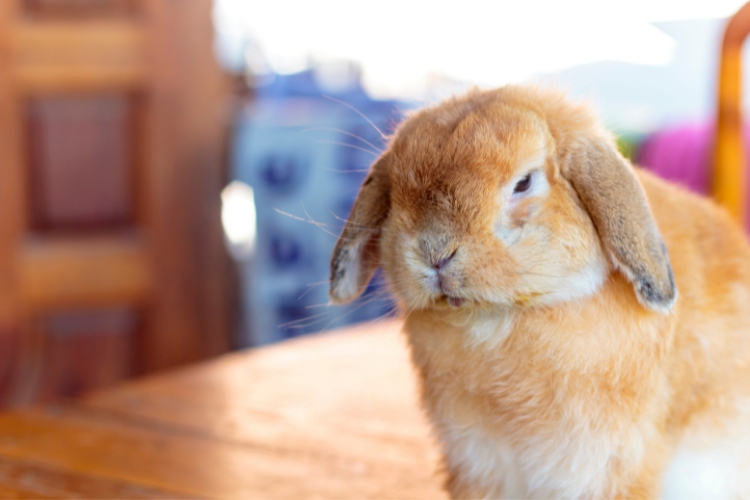Welcoming a Holland Lop bunny into your home requires thoughtful preparation to ensure a safe and comfortable environment.
In this blog post guide, we will provide you essential tips on how to create a suitable habitat, bunny-proof your home, handle and groom your bunny, establish litter box training, and travel safely with your furry companion.
By following these guidelines, you can make your home a haven for your Holland Lop and enjoy the delights of bunny companionship.
Key Takeaways
- Choose a spacious cage with a solid bottom and provide comfortable bedding and litter, ensuring proper ventilation and temperature for your Holland Lop’s well-being.
- Bunny-proof your home by securing electrical cords, removing toxic plants, and blocking small spaces to prevent accidents and ensure your bunny’s safety during playtime.
- Handle your Holland Lop with care using safe techniques and maintain their health with routine grooming, including nail trimming and dental care.
- Establish litter box training by introducing a suitable litter box, encouraging consistent use, and maintaining cleanliness to keep your home odor-free.
- Prepare for traveling with your Holland Lop by selecting an appropriate carrier, considering transportation options, and helping them adjust to new environments.
Creating a Suitable Habitat
Choosing the Right Cage
After choosing the right cage for your Holland Lop, it’s essential to set it up for your bunny’s comfort and safety. Ensure the cage is spacious enough to allow for free movement, as well as areas for sleeping, eating, and playing. A common guideline is a minimum of 4 times the size of your bunny when stretched out.
Incorporate a variety of accessories to enrich your bunny’s habitat:
- A hideaway for privacy
- A feeding area with a water bottle and food dish
- Chew toys to satisfy their natural urge to gnaw
- A hay rack to encourage foraging
Remember to choose accessories that are safe and appropriate for the size of your Holland Lop. Regularly inspect the cage for any sharp edges or loose components that could harm your bunny. With a well-set-up cage, your Holland Lop will have a secure and enjoyable living space.
Setting Up the Cage
After choosing the right cage, the next step is to set it up in a way that ensures your Holland Lop’s comfort and safety. Begin by lining the bottom of the cage with a soft layer of bedding material. Paper-based bedding or hay is ideal as it absorbs urine and provides a comfortable surface for your bunny to rest on.
Ensure the cage is spacious enough for your bunny to move around freely. It should also include various toys and chewable items to keep your bunny engaged and help prevent boredom. Here’s a simple checklist to follow when setting up your bunny’s new home:
- Soft bedding material at the bottom
- A hideaway for privacy
- Chewable toys for dental health
- A feeding area with a water bottle and food dish
- Space for a litter box
Remember to regularly clean and maintain the cage to provide a hygienic environment for your Holland Lop. A clean habitat is crucial for preventing health issues and ensuring your bunny’s happiness.
Providing Bedding and Litter
When setting up your Holland Lop’s living space, choosing the right bedding and litter is crucial for their comfort and hygiene. Bedding should be soft, absorbent, and safe if ingested. Paper-based bedding or hay are excellent choices, as they meet these criteria and are readily available.
For the litter box, select a size that allows your bunny to move around comfortably. Fill it with a rabbit-safe litter, avoiding clumping or dusty types which can cause respiratory issues.
Pet Keen recommends products like Carefresh Small Animal Bedding for overall quality and Oxbow Bene Terra Eco-Straw Litter for value. Regular cleaning of the litter box is essential to prevent the buildup of ammonia and maintain a fresh environment.
Here are some top picks for rabbit litter and bedding:
- Carefresh Small Animal Bedding – Best Overall
- Oxbow Bene Terra Eco-Straw Litter – Best Value
- Rabbit Hole Hay Ultra Premium Pet Bedding – Premium Choice
Remember, a clean and comfortable habitat is key to your Holland Lop’s well-being.
Ensuring Proper Ventilation and Temperature
Holland Lop bunnies thrive in environments with stable temperatures and good air circulation. Place the cage in an area that is well-ventilated but shielded from direct sunlight and strong drafts. The optimal temperature range for these small creatures is between 60-75 degrees Fahrenheit.
Monitoring the temperature within your bunny’s habitat is essential. Sudden temperature fluctuations can be harmful to your Holland Lop’s health. Consider using a digital thermometer to keep track of the ambient temperature. Here’s a simple guide to help you maintain the ideal conditions:
- Summer: Ensure the room is cool, use fans or air conditioning if necessary.
- Winter: Keep the area warm, but not hot; avoid placing the cage near heaters or fireplaces.
- All year round: Maintain good airflow, but prevent direct drafts from hitting the cage.
Remember, a comfortable bunny is a happy bunny. Regularly check and adjust the environment to suit your Holland Lop’s needs, ensuring they remain healthy and content.
Bunny-Proofing the Environment
Securing Electrical Cords
Holland Lops, like many other pets, have a natural tendency to chew on things, which can include dangerous items like electrical cords. Securing electrical cords is essential to prevent any risk of electrical shock or other injuries to your bunny.
One effective method is to conceal cords with protectors that are designed to be chew-resistant. For instance, the SunGrow No Chew Rabbit Cord Protector can be a valuable investment for your home.
This product is specifically designed to keep rabbits from chewing on your electrical cords by providing a Pre-Cut split wire tubing that easily wraps around the wire, preventing mishaps.
Additionally, you can take the following steps to ensure the safety of your Holland Lop:
- Regularly inspect cords for any signs of damage or wear.
- Keep cords out of reach by elevating them or using cord concealers.
- Unplug and store away electrical devices when not in use.
- Use cord organizers to minimize loose wires around the house.
Removing Toxic Plants
After ensuring that your home is free from toxic plants that can harm your Holland Lop, it’s crucial to block access to small spaces. Bunnies are curious and can squeeze into tight spots, which may lead to injury or escape. Use baby gates or specially designed barriers to prevent access to areas behind or beneath furniture.
In addition to physical barriers, consider using bitter sprays or taste deterrents on surfaces you don’t want your bunny to chew. These are generally safe for pets but make sure to choose a product specifically designed for use with rabbits.
Lastly, always supervise your bunny during playtime to quickly intervene if they approach a dangerous area or object. This hands-on approach will not only keep your bunny safe but also strengthen your bond.
Blocking Access to Small Spaces
To ensure your Holland Lop’s safety, it’s crucial to block access to small spaces where they might squeeze into and get stuck. Many owners opt for practical solutions like using an X-Pen or small animal fence to seal off these areas completely.
Additionally, installing baseboard guards and edge protectors can prevent your bunny from chewing on hazardous materials or getting injured.
When considering the dimensions for barriers, it’s important to choose the right size to effectively block the intended space. Here’s a simple guide to help you select the appropriate size:
- Height base to top: Up to 22.9 in – suitable for low-clearance areas.
- Width shorter horizontal edge: Up to 15.9 in – ideal for narrow gaps.
- Length longer horizontal edge: Up to 24.9 in – covers most standard spaces.
Remember, the goal is to create a safe and enjoyable environment for your bunny, which includes giving them freedom to explore without the risk of getting into trouble.
Supervising Playtime
Supervised playtime is crucial for the safety and well-being of your Holland Lop bunny. Always be present when your bunny is out of its cage to monitor its activities and prevent any mishaps. Bunnies are curious and can quickly get into trouble, so close supervision is necessary to ensure they don’t chew on dangerous objects or escape to unsafe areas.
During playtime, it’s important to interact with your bunny and provide enrichment through various toys and activities. Here’s a list of suggestions to enhance your bunny’s playtime experience:
- Offer a variety of toys, such as chew toys, tunnels, and balls.
- Rotate toys regularly to maintain interest.
- Include interactive toys and treat puzzles to stimulate their mind.
- Create hiding spots and safe climbing structures.
Remember, the goal of playtime is not only to provide exercise but also to foster a bond between you and your Holland Lop. By engaging in play, you’re also encouraging their natural behaviors and promoting a happy, healthy bunny.
Handling and Grooming
Safe Handling Techniques
Handling your Holland Lop bunny correctly is crucial for its safety and your own. Always support your bunny’s hindquarters when picking it up to prevent injury. Use one hand to gently scoop under the chest, and with the other, support the back end.
This method ensures that the bunny feels secure and is less likely to struggle or scratch.
When holding your Holland Lop, keep it close to your body to provide additional support and comfort. It’s important to remain calm and move slowly to avoid startling the bunny. If you need to set your bunny down, lower it to the ground gently and release it carefully, allowing it to hop away when it feels ready.
Here are some key points to remember when handling your bunny:
- Approach your bunny from the side, not from above.
- Avoid loud noises or sudden movements.
- Never pick up a bunny by the ears or scruff.
- Regularly practice handling to build trust.
By following these guidelines, you can ensure that your interactions with your Holland Lop are both safe and enjoyable.
Routine Grooming Practices
Establishing a routine for grooming your Holland Lop is essential for their well-being. Regular brushing helps to remove loose fur and can prevent the formation of mats, especially during shedding seasons. Use a soft-bristled brush suitable for your bunny’s delicate skin.
For optimal health, keep an eye on your pet’s coat condition. A glossy and smooth coat indicates good health, while a dull or patchy coat may suggest a need for dietary adjustments or a check-up with the vet. Here’s a simple grooming checklist to follow:
- Brush your Holland Lop at least once a week.
- Check for signs of parasites or skin issues during each grooming session.
- Trim their nails regularly to avoid overgrowth and complications.
- Gently clean their ears with a damp cloth to prevent wax build-up.
Remember, grooming is not just about maintaining appearances; it’s a crucial part of your pet’s healthcare routine. By staying consistent with grooming, you can catch potential health issues early and ensure your bunny stays comfortable and happy.
Nail Trimming and Dental Care
Proper nail trimming and dental care are essential for your Holland Lop’s health and comfort. Regular nail trimming prevents overgrowth, which can lead to pain and mobility issues. Use a pair of sharp, small animal nail clippers and follow these steps:
- Gently restrain your bunny, ensuring they feel secure.
- Identify the ‘quick’—the blood vessel inside the nail—to avoid cutting too short.
- Trim the tips of the nails, taking care not to cut into the quick.
Dental care is equally important, as rabbits’ teeth grow continuously. Providing ample hay helps wear down their teeth naturally. However, if you notice signs of dental problems, such as difficulty eating or drooling, consult your veterinarian.
They can perform necessary dental procedures to keep your bunny’s teeth at a healthy length. Remember, monitoring dental health is a key aspect of rabbit care, as outlined in ‘The Ultimate Guide to Rabbit Care: Everything You Need to Know’.
Establishing Litter Box Training
Introducing the Litter Box
Introducing a litter box to your Holland Lop is a crucial step in establishing good hygiene habits. Place the litter box in a quiet corner of the cage to make it appealing to your bunny. Initially, you may notice some reluctance, but with patience, your bunny will start using the box regularly.
To encourage your bunny to use the litter box, follow these simple steps:
- Place a handful of hay in the litter box to attract your bunny, as they often eat while they eliminate.
- Add some of the bunny’s droppings into the new litter box to mark it with their scent.
- If your bunny has an accident outside the box, gently move them to the litter box to reinforce the desired behavior.
Remember, consistency is key. Keep the litter box in the same location, as Holland Lops are creatures of habit and prefer familiarity. Praise and treats can be used as positive reinforcement when they use the litter box correctly.
Encouraging Consistent Use
To foster consistent litter box use, positive reinforcement is crucial. Reward your Holland Lop with treats and affection when they use the litter box correctly. This not only encourages them to keep using the box but also strengthens your bond.
Establish a routine by placing your bunny in the litter box at times they are most likely to go, such as after meals or playtime. Here’s a simple guide to help you:
- Observe your bunny’s habits to determine their bathroom schedule.
- Place them in the litter box during these predictable times.
- Reward them immediately after they use the box to reinforce the behavior.
Remember, patience is key. Bunnies learn at their own pace, and consistency from your side is essential. If accidents happen, clean them up promptly without showing frustration or anger towards your pet. With time and positive reinforcement, your Holland Lop will develop good litter box habits.
Maintaining Cleanliness and Odor Control
Maintaining cleanliness and odor control in your Holland Lop’s litter box is crucial for a healthy and pleasant living environment. Regular cleaning is essential to prevent the buildup of waste and the associated smells. By incorporating the daily addition of hay, you can extend the time between thorough cleanings to about 3-4 days without a noticeable odor. This routine ensures that your bunny’s habitat remains fresh and hygienic.
To streamline the cleaning process, consider the following steps:
- Remove soiled bedding and litter daily.
- Perform a deep clean of the litter box at least once a week.
- Use a mild, pet-safe disinfectant during the deep clean.
- Replace any bedding or litter with fresh materials after cleaning.
Always ensure that your bunny has access to fresh water and that their living space is kept dry and free from dampness. This not only aids in odor control but also promotes overall health and well-being for your Holland Lop.
Traveling with Your Holland Lop Bunny
Preparing for a Safe Journey
When planning to travel with your Holland Lop bunny, selecting the appropriate carrier is crucial for their safety and comfort. The carrier should be spacious enough to allow your bunny to stretch, turn around, and lie down, but not so large that they slide around during transit.
Line the carrier with soft bedding and include a familiar item, like a toy or blanket, to provide a sense of security. Before embarking on your journey, create a checklist of essential items to pack. This includes ample food, water, and any necessary medications.
It’s also important to plan for regular stops to give your bunny opportunities to hydrate and exercise. Here’s a quick list to ensure you have everything covered:
- Comfortable, well-ventilated carrier
- Bedding material
- Familiar toy or blanket
- Food and water supply
- Medications (if applicable)
- Travel itinerary with planned breaks
Remember, maintaining a routine is key to minimizing stress for your Holland Lop during travel. Monitor their behavior closely and provide reassurance to help them feel safe throughout the journey.
Transportation Options
When planning to travel with your Holland Lop, selecting the right transportation method is crucial for their well-being. Car travel is often the preferred choice, as it allows you to maintain a controlled environment and keep a close eye on your pet. Ensure the carrier is spacious and secure, with ample bedding for comfort.
For air travel or other modes of transportation, it’s essential to research and comply with the specific pet policies and requirements. This will help prevent any unexpected issues during your journey. Remember to always prioritize your bunny’s safety and comfort, regardless of the transportation method chosen.
Here are some key considerations for transporting your Holland Lop:
- Use a well-ventilated and sturdy carrier.
- Include familiar items, like a favorite toy, to reduce stress.
- Check for any travel restrictions or requirements in advance.
- Plan for regular breaks if traveling long distances by car.
Adjusting to New Environments
When you bring your Holland Lop bunny to a new environment, it’s crucial to give them time to acclimate. Start by setting up a familiar space with their favorite bedding, toys, and a consistent supply of fresh water.
Gradually introduce them to the new surroundings, allowing them to explore at their own pace. It’s essential to maintain their routine to provide a sense of security. During the first few days, closely monitor your bunny’s behavior for any signs of stress or discomfort.
Offer comfort and reassurance to help them settle in. Transitioning to new food should be done slowly; begin by mixing a small amount of the new food with their current diet. Every day that follows, increase the percentage of new food slightly until your rabbit is eating 100% new food. This process should take 7-10 days.
Remember, patience is key when helping your bunny adjust. Here’s a simple checklist to ensure a smooth transition:
- Maintain a consistent feeding and playtime schedule.
- Keep a close eye on their health and behavior.
- Provide plenty of mental and physical stimulation.
- Allow your bunny to socialize at their own comfort level.
Conclusion
In summary, bunny-proofing your home for a Holland Lop involves creating a safe and nurturing environment that caters to their unique needs. By securing electrical cords, removing hazardous plants, and ensuring their habitat is comfortable and spacious, you can protect your bunny from common household dangers.
Regular grooming, proper handling, and litter box training are also crucial for their well-being. Remember to provide your Holland Lop with love and patience, and you’ll be rewarded with a joyful and healthy companion.
With these measures in place, you can enjoy the delightful experience of sharing your home with a Holland Lop bunny, knowing they are safe and content.
FAQs:
What size cage is recommended for a Holland Lop bunny?
A cage for a Holland Lop bunny should provide ample space for hopping and stretching. A minimum of 4 square feet of living space is recommended, with a solid bottom to prevent injuries to the bunny’s feet.
How do I bunny-proof my home for a Holland Lop?
Bunny-proof your home by securing electrical cords, removing toxic plants, and blocking access to small, tight spaces. Always supervise your bunny during playtime to prevent accidents and remove any potential hazards from its reach.
What type of bedding and litter should I use for my Holland Lop bunny?
Use rabbit-safe litter or wood shavings in the litter box, and provide comfortable bedding material in the bottom of the cage. Regularly clean the litter box to maintain hygiene and prevent odor.
How should I handle and groom my Holland Lop bunny?
Handle your Holland Lop bunny with care using safe techniques to avoid causing stress or injury. Establish a routine grooming practice, including regular nail trimming and dental care, to maintain their health and well-being.
How can I litter box train my Holland Lop bunny?
Introduce a litter box in the cage and encourage your bunny to use it by placing their droppings inside. Praise your bunny for correct use and maintain consistency with the litter box placement, as rabbits thrive on habit.
What should I consider when traveling with my Holland Lop bunny?
Ensure the safety and comfort of your Holland Lop bunny during travel by preparing a well-ventilated and secure carrier. Line it with bedding and a familiar item for comfort, and make sure the carrier is fastened securely.

